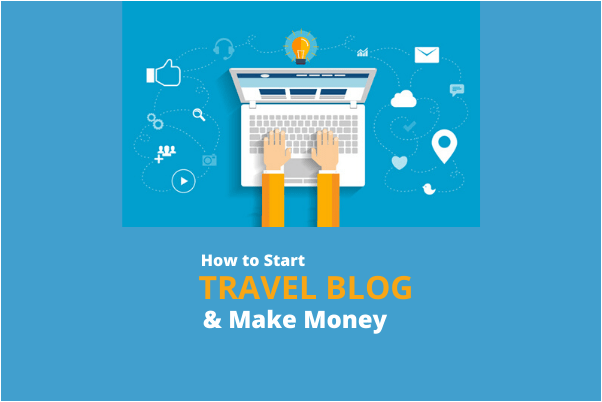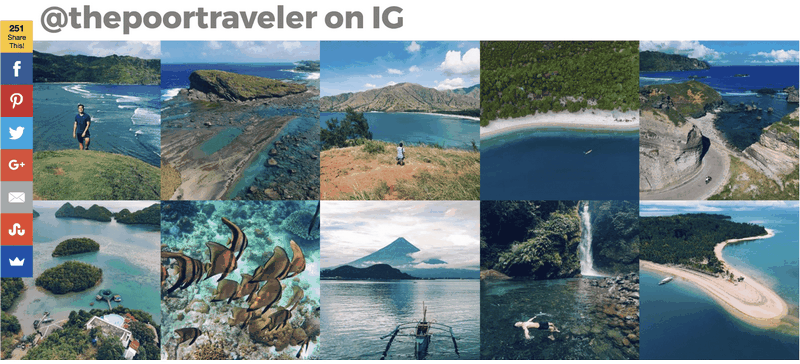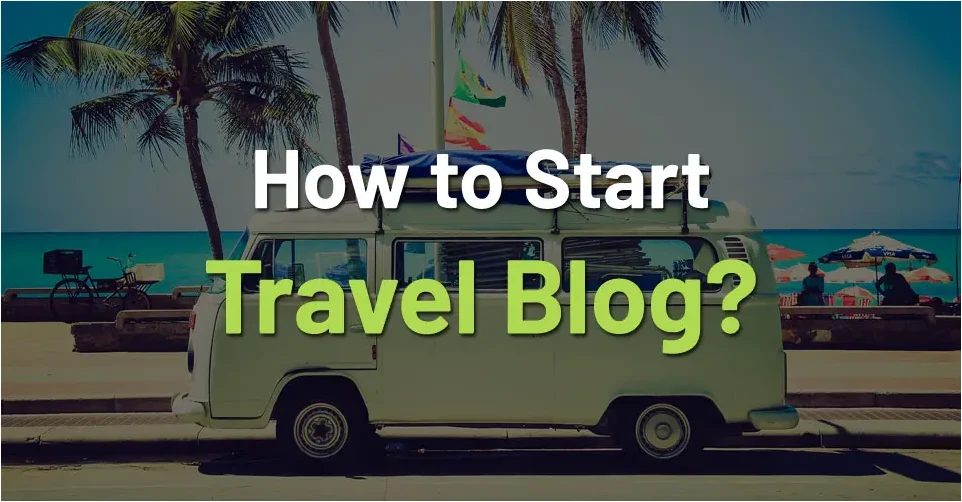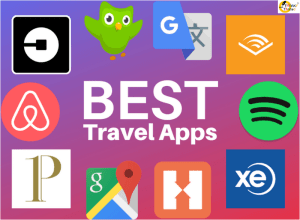
How to Start a Travel Blog
Welcome to our step-by-step guide on how to start a travel blog and share your adventures with the world! If you are passionate about traveling and want to share your experiences, travel tips, and advice with others, starting a travel blog is the perfect platform for you. In this guide, we will take you through the essential steps to help you get started on your blogging journey.
Firstly, it’s important to choose a catchy and unique name for your travel blog that reflects your personality and niche. Consider incorporating keywords related to travel, exploration, or the specific regions you plan to focus on. Once you have a name in mind, you can check if the domain is available and register it. This will be your blog’s online address, so make sure it’s easy to remember and spell.
Next, you’ll need to choose a blogging platform. There are several popular platforms available that offer user-friendly interfaces and customizable designs. WordPress and Blogger are two popular options that offer a range of features and templates to suit your needs. Take some time to explore these platforms and choose the one that best fits your style and requirements.
Once you have set up your blog, it’s time to start writing and sharing your travel adventures! Begin by creating a few introductory posts to let your readers know about your travel goals and what they can expect from your blog. Share your travel tips, advice, and insights on various destinations, things to do, and local cuisines. Don’t forget to include high-quality photos to make your blog visually appealing and captivating.
In conclusion, starting a travel blog is an exciting journey that allows you to share your passion for travel and inspire others to explore the world. By following these steps and consistently creating engaging content, you can build a successful travel blog and connect with like-minded travelers around the globe. So, start your travel blog today and let the adventures begin!
Choose a Catchy Blog Name
One of the first steps to start a successful travel blog is to choose a catchy and memorable blog name. Your blog name should reflect your travel niche and stand out from the crowd. Here are some tips and advice to help you choose the perfect blog name:
- Define your travel niche: Before selecting a blog name, it’s important to identify your travel niche. Are you planning to focus on luxury travel, backpacking, adventure travel, or any other specific type of travel? Knowing your niche will help you come up with a blog name that speaks directly to your target audience.
- Keep it short and simple: A catchy blog name should be easy to remember and pronounce. Avoid using long and complicated words that may confuse your readers. Keep it short, simple, and easy to spell.
- Include relevant keywords: Incorporating relevant keywords in your blog name can help with search engine optimization (SEO) and improve your blog’s visibility online. For example, if your blog focuses on budget travel, consider including words like “budget” or “affordable” in your blog name.
- Make it unique: Stand out from the competition by choosing a unique and distinctive blog name. Avoid using generic terms or common travel-related words. Be creative and think outside of the box.
- Check domain availability: Once you have come up with a few potential blog names, check if the corresponding domain names are available. Having a matching domain name will make it easier for your readers to find your blog and establish your brand.
- Get feedback: Don’t be afraid to ask for feedback from friends, family, or fellow bloggers. They can provide valuable insights and help you choose a blog name that resonates with your target audience.
By following these steps and considering these tips, you can choose a catchy and memorable blog name that sets you on the path to travel blogging success. Remember to take your time, brainstorm ideas, and select a name that truly represents your passion for travel.
Pick a Suitable Blogging Platform
One of the first steps to starting a successful travel blog is picking a suitable blogging platform. The platform you choose will be the foundation of your blog, so it’s important to choose one that meets your needs and goals. There are several popular blogging platforms to choose from, each with its own set of features and benefits.
When selecting a blogging platform, consider the following factors:
- Ease of use: Look for a platform that is user-friendly and intuitive, especially if you’re new to blogging.
- Customization options: Find a platform that allows you to personalize your blog’s design and layout to reflect your travel style.
- Mobile responsiveness: Given that many travelers use their mobile devices to access blogs, it’s essential to choose a platform that provides a seamless mobile experience.
- Community and support: Consider the availability of a supportive blogging community and reliable customer support.
Some popular blogging platforms for travel bloggers include WordPress, Blogger, and Squarespace. Each platform has its own set of strengths and weaknesses, so take the time to research and explore different options before making a decision.
In addition to a blogging platform, it’s also important to consider a domain name and hosting provider. A domain name is the web address of your blog (e.g., www.mytraveladventures.com), while a hosting provider is a service that stores your blog’s files and makes them accessible on the internet. Many blogging platforms offer domain registration and hosting services as part of their packages, making it convenient to set up your blog in one place.
Lastly, seek advice and gather tips from experienced travel bloggers when selecting a blogging platform. They can offer valuable insights and recommendations based on their own experiences.
Register a Domain Name
Registering a domain name is one of the crucial steps in starting a travel blog. A domain name is the web address that people will use to access your website. It should be easy to remember and preferably match the name of your blog.
When choosing a domain name, it’s important to consider the purpose of your blog and your target audience. The name should reflect the theme of your blog and be relevant to the content you plan to share. A catchy and unique domain name can help you stand out in the crowded blogosphere and attract more visitors.
There are several platforms where you can register a domain name, such as GoDaddy, Namecheap, and Bluehost. These platforms make the process simple and offer various pricing options. It’s advisable to choose a platform that offers good customer support and has a user-friendly interface.
Before finalizing your domain name, check if it’s available and not already registered by someone else. You can use the domain name search tool provided by the domain registration platforms to check for availability. It’s also a good idea to consider purchasing any similar domain names or variations to protect your brand and avoid confusion.
In summary, registering a domain name is an essential step for the success of your travel blog. Choose a name that represents your blog’s theme, check for availability, and register through a reliable platform. With a memorable domain name, you’re ready to start sharing your adventures with the world!
Find a Reliable Web Hosting Provider
When starting a travel blog, one of the most important steps is finding a reliable web hosting provider. A web hosting provider is essentially the platform that will host your blog and make it accessible to visitors from around the world.
Choosing a reliable web hosting provider is crucial for the success of your travel blog. You want to ensure that your blog is always online, fast, and secure. Look for a provider that offers a good uptime guarantee, high-speed servers, and robust security measures.
Before making a decision, do some research and read reviews to find out what other travel bloggers are saying about different hosting providers. Consider factors such as customer support, pricing, and scalability options. It’s also helpful to check if the provider offers any tools or features specifically designed for bloggers.
Once you’ve found a reliable web hosting provider, signing up and setting up your blog is usually a straightforward process. Many providers offer one-click installations for popular blogging platforms like WordPress, making it easy for even beginners to get started.
By taking the time to find a reliable web hosting provider, you’ll be setting yourself up for success in the world of travel blogging. So, don’t rush this step and make sure to choose a provider that meets your specific needs and requirements.
Install and Customize Your Blogging Platform
Once you have decided to start a travel blog, the first step towards success is to install a blogging platform of your choice. There are various platforms available, such as WordPress, Blogger, and Tumblr. Each platform has its own set of features and benefits, so it’s important to choose the one that best fits your needs.
After installing your chosen platform, it’s time to customize it to reflect your travel blog’s personality. This includes choosing a theme or template that suits your style and adding your own branding elements, such as a logo or color scheme. Customizing your blog not only helps create a unique and visually appealing design but also helps make it easier for your readers to navigate and engage with your content.
Here are some tips to keep in mind while customizing your blogging platform:
- Choose a responsive theme: Since many people access the internet through their mobile devices, it’s important to choose a theme that is responsive and mobile-friendly. This ensures that your blog looks good and functions properly on different screen sizes.
- Add social media sharing buttons: Make it easy for your readers to share your content by adding social media sharing buttons to your blog. This allows your readers to share your articles, photos, and videos with their friends and followers, helping to increase your blog’s exposure and reach.
- Create an About Me page: Introduce yourself to your readers by creating an About Me page. Include information about your travel experiences, your interests, and what they can expect from your blog. This helps to establish a connection with your readers and makes them feel more engaged with your content.
- Organize your content: Use categories and tags to organize your blog posts. This makes it easier for your readers to navigate and find the content they are interested in. It also helps search engines index your content more effectively, improving your blog’s visibility in search results.
By following these steps and customizing your blogging platform, you can create a travel blog that stands out and engages your readers. Remember to regularly update your blog with fresh and unique content to keep your readers coming back for more!
Create and Design Your Blog Layout
When it comes to creating and designing your travel blog layout, there are several key tips and advice to consider. Your blog layout plays a pivotal role in the success of your travel blog, as it determines how visually appealing and user-friendly your site is.
Firstly, it’s important to choose a platform to host your blog. There are many platforms available, such as WordPress, Blogger, and Squarespace. Each platform offers different features and customization options, so it’s important to choose one that aligns with your needs and preferences.

Next, consider the overall design of your blog. Use a color scheme and font that reflects the theme of your travel blog. For example, if you focus on adventurous and outdoor activities, consider using bold and vibrant colors. If you prefer a more minimalistic and elegant style, opt for neutral colors and clean fonts.
Another key aspect of your blog layout is the organization of your content. You want to make it easy for readers to navigate through your blog and find the information they are looking for. Consider using headings, subheadings, and bullet points to break up your content and make it more readable.
Additionally, think about incorporating visually appealing elements into your blog layout. This could include high-quality images, videos, or even a map that showcases your travel destinations. These elements not only enhance the visual appeal of your blog but also provide additional value for your readers.
In conclusion, creating and designing your blog layout is crucial for the success of your travel blog. By choosing the right platform, using a cohesive design, organizing your content effectively, and incorporating visually appealing elements, you can create a blog layout that is engaging, user-friendly, and visually appealing.
Write and Publish Your First Blog Post
Now that you have set up your travel blog and familiarized yourself with the basic features and functionalities, it’s time to start writing and publishing your first blog post. This is an exciting step in your journey towards blogging success as it allows you to share your travel experiences and insights with the world.
Before you start writing, it’s important to brainstorm and plan your blog post. Think about the travel topic you want to write about and what unique perspective or advice you can offer to your readers. This will help you create engaging and informative content that will keep your audience coming back for more.
When writing your blog post, it’s important to keep your tone conversational and engaging. Use descriptive language to paint a vivid picture of your travel experiences and include personal anecdotes to connect with your readers on a deeper level. Remember to proofread your post for grammatical errors and typos before hitting the publish button.
Once your blog post is ready, it’s time to publish it on your travel blog. Depending on the platform you have chosen, the process may vary slightly, but generally, you will need to navigate to the “New Post” or “Create Post” section of your blog’s dashboard. Here, you will be able to add a title, write the content of your blog post, and insert any relevant images or videos.
After you have entered all the necessary information, take a moment to preview your blog post to ensure it looks and reads the way you want it to. Once you are satisfied with the final result, it’s time to hit the publish button and share your travel adventures with the world!
Remember that writing and publishing your first blog post is just the beginning of your blogging journey. As you continue to write and gain experience, you will become more confident in your skills and develop your own unique style. Don’t be afraid to experiment with different topics, formats, and writing techniques to keep your travel blog fresh and interesting.
Optimize Your Blog for Search Engines
One essential aspect of creating a successful travel blog is optimizing it for search engines. By implementing effective SEO strategies, you can increase your blog’s visibility and reach a wider audience. Here are some tips to help you optimize your travel blog:
- Keyword Research: Conduct thorough keyword research to identify the most relevant and popular terms related to travel blogging. Use these keywords strategically in your blog posts, headings, and meta descriptions to improve your search engine rankings.
- Quality Content: Produce high-quality, unique, and informative content that offers value to your readers. Search engines prioritize websites that provide helpful information, so make sure your blog posts are well-written and engage your audience.
- Meta Tags: Optimize your blog’s meta tags, including title tags, meta descriptions, and alt tags for images. These tags should include relevant keywords and provide a brief summary of your blog post or image to attract both search engine crawlers and potential readers.
- URL Structure: Create a user-friendly URL structure that incorporates keywords and accurately reflects the content of your blog posts. Avoid using numbers or generic URLs, and instead, use descriptive phrases that are easy to understand and remember.
- Internal and External Linking: Include internal links within your blog posts to guide readers to related content on your website. Also, incorporate relevant external links to reputable sources to support your content and improve your blog’s credibility in the eyes of search engines.
- Mobile Optimization: Ensure your travel blog is optimized for mobile devices. With the increasing number of people accessing websites on smartphones and tablets, having a mobile-responsive website is crucial for improving user experience and search engine rankings.
- Site Speed: Improve your blog’s loading time by optimizing image sizes, using caching plugins, and selecting a reliable hosting provider. Search engines prioritize websites that load quickly, so make sure your blog performs well in terms of speed.
By following these steps and implementing effective SEO strategies, you can increase your travel blog’s visibility in search engine results, attract more organic traffic, and ultimately achieve greater success in the competitive world of travel blogging.
Share Your Blog on Social Media
Once you have started your travel blog, it’s important to share your content on social media to reach a wider audience and gain more followers. Here are some steps and advice on how to effectively share your blog on various social media platforms:
- Create social media accounts: Set up accounts on popular platforms such as Facebook, Instagram, Twitter, and Pinterest. These platforms will serve as channels for promoting your blog and attracting readers.
- Optimize your profiles: Make sure to include a link to your blog on your social media profiles. Use high-quality images and write compelling descriptions that showcase your blog’s content and style.
- Share teasers and highlights: Regularly post snippets from your blog posts, along with captivating images, to pique the interest of your social media followers. Tease them with exciting details and encourage them to click through to your blog for the full story.
- Engage with your audience: Respond to comments and messages on your social media posts. Engage in conversations, ask questions, and create a sense of community. This will help build a loyal following and encourage readers to share your content.
- Utilize hashtags: Research relevant hashtags and include them in your social media posts to increase your reach. Hashtags will help your content be discovered by users who are interested in travel and related topics.
- Collaborate with influencers: Reach out to popular travel influencers and bloggers in your niche and propose collaborations. Guest posting on their blogs or having them share your content on their social media channels can significantly boost your blog’s exposure.
- Track your success: Monitor your social media analytics to understand which platforms and types of posts are performing well. Use this data to refine your social media strategy and focus on channels that are driving the most traffic to your blog.
By following these tips and regularly sharing your blog on social media, you will increase your blog’s visibility, attract more readers, and ultimately achieve success in the competitive world of travel blogging.
Engage with Your Readers and Build a Community
Interacting with your readers is an essential part of building a successful travel blog. Here are some tips to help you engage with your audience and create a strong community:
- Respond to comments: Take the time to reply to comments on your blog posts. Answer any questions your readers may have and thank them for their feedback.
- Encourage discussion: Pose questions at the end of your blog posts to encourage readers to leave comments and share their thoughts. This will help create a sense of community and foster conversations.
- Offer advice and tips: Share your expertise and provide valuable advice to your readers. This could include travel tips, packing lists, itinerary suggestions, or recommendations for places to visit. By offering useful information, you will build trust with your audience.
- Feature guest posts: Invite other travel bloggers or experts to contribute guest posts on your blog. This not only provides fresh perspectives for your readers, but also helps strengthen your relationship with other bloggers in the community.
- Create a newsletter: Offer your readers the option to subscribe to a newsletter where you can share exclusive content, updates, and information about upcoming trips or events. This will help you stay connected with your audience on a regular basis.
- Organize meetups or events: Consider organizing meetups or events for your readers, where they can connect with you and other like-minded individuals. This can be a great way to build a strong community around your blog.
By following these steps and actively engaging with your readers, you can create a thriving travel blog community and establish yourself as a trusted source of information and inspiration in the travel industry.
Monetize Your Travel Blog
Once you have started your travel blog and created engaging content, it’s time to monetize your efforts. Here are some tips and steps to help you achieve success:
- Affiliate Marketing: One of the most popular ways to monetize your travel blog is through affiliate marketing. Join affiliate programs and promote products or services related to travel. When your readers make a purchase through your unique affiliate link, you earn a commission.
- Sponsored Posts: Collaborate with travel brands and companies for sponsored posts. Write honest and compelling reviews about their products or services on your blog, and get paid for your recommendations. Remember to maintain transparency and disclose any sponsored content to your readers.
- Offer Services: Leverage your travel expertise by offering services like travel consultation or trip planning. Create packages that cater to different budgets and provide personalized advice to your clients. This not only generates income but also establishes you as an authority in the travel industry.
- Advertisement Placement: Place targeted advertisements on your blog to generate revenue. Join advertising networks or work with ad agencies to display ads that align with your blog’s niche. Optimize ad placement for maximum visibility and user experience.
- Product Sales: Create and sell your own travel-related products. This can include guides, ebooks, photography prints, or even merchandise with your blog’s branding. Utilize platforms like Etsy or Gumroad to sell your products directly to your readers.
- Social Media Sponsorships: As your blog gains traction, brands may approach you for sponsored content on your social media channels. Collaborate with them to promote their products or services through engaging posts and stories. Negotiate fair compensation for your sponsored social media content.
Remember, monetizing your travel blog requires a balance between generating income and maintaining your authenticity as a travel blogger. Experiment with different monetization strategies and find the ones that align with your blog’s goals and values. Happy monetizing!
Collaborate with Other Travel Bloggers
One of the most effective ways to grow your travel blog is to collaborate with other travel bloggers. By working together, you can share your audience and reach new readers who might not have found your blog otherwise. Here are a few steps to get started:
- Reach out to fellow travel bloggers and introduce yourself. Find bloggers who have a similar target audience and blog style, and who are active on social media. This will increase the chances of a successful collaboration.
- Propose a collaboration idea. It could be a guest post exchange, a joint giveaway, or an interview-style blog post. Be open to suggestions and try to find a mutual agreement that benefits both parties.
- Create a plan and set goals for the collaboration. Determine what you hope to achieve from the collaboration, whether it’s increasing your blog traffic, gaining new followers on social media, or enhancing your reputation within the travel blogging community.
- Once you have a plan in place, start creating content together. This could involve writing guest posts, co-hosting a webinar, or creating a collaborative travel guide. The key is to create something that is valuable to both bloggers and their audiences.
- Promote the collaboration across all your platforms. Share links to each other’s blog posts, mention the collaboration on social media, and consider using paid advertising to reach a wider audience.
- Track the results of the collaboration and analyze its impact on your blog. Use analytics tools to measure the increase in blog traffic, engagement on social media, and any other relevant metrics. This will help you assess the success of the collaboration and learn from it for future partnerships.
Collaborating with other travel bloggers is a great way to expand your reach and connect with a larger audience. It can also provide you with valuable insights and new ideas for your own blog. So start reaching out to fellow travel bloggers and see how you can work together to create amazing content and grow your blogs!
Produce High-Quality Content Regularly
One of the most important aspects of running a successful travel blog is consistently creating high-quality content. This will keep your readers engaged and coming back for more. To ensure your content is top-notch, follow these tips:
- Plan your content: Before you start writing, make a plan and outline for your blog posts. This will help you stay organized and focused.
- Do thorough research: Take the time to research your travel destinations, activities, and attractions. Providing accurate and helpful information will make your content more valuable.
- Write with passion: Show your excitement and enthusiasm for travel in your writing. Let your personality shine through and share your personal experiences.
- Include captivating visuals: Use high-quality photos and videos to enhance your content. Visuals can help transport your readers to the places you are writing about.
- Keep it fresh: Stay up to date with the latest travel trends and include timely information in your blog posts. This will make your content more relevant and interesting.
- Proofread and edit: Before publishing your posts, make sure to proofread and edit them for grammar and spelling errors. This will make your blog look more professional.
- Engage with your audience: Encourage your readers to leave comments and interact with you. Respond to their questions and feedback to build a loyal community around your blog.
By consistently producing high-quality content, you will establish yourself as an authority in the travel blogging platform and attract a dedicated audience. Follow these steps and tips to start your travel blog on the right track.
Capture and Share Stunning Photos and Videos
When starting a travel blog, capturing and sharing stunning photos and videos is essential for creating engaging content and attracting readers. Follow these steps to ensure you capture the best visuals for your blog:

- Invest in a good camera: To capture high-quality photos and videos, it’s important to invest in a good camera. Consider purchasing a DSLR or mirrorless camera with interchangeable lenses to give you more flexibility and control over your shots.
- Experiment with different angles and compositions: Don’t be afraid to get creative with your shots. Try experimenting with different angles, perspectives, and compositions to capture unique and visually appealing images.
- Use natural light: Natural light is the key to capturing beautiful photos and videos. Avoid using flash whenever possible and take advantage of the golden hour, which occurs during sunrise and sunset, for the best lighting conditions.
- Learn basic photography and videography techniques: Familiarize yourself with basic photography and videography techniques such as the rule of thirds, leading lines, and proper framing. This knowledge will help you create more visually appealing content.
Once you have captured your stunning photos and videos, it’s time to share them on your blog and other platforms. Here’s some advice for showcasing your visual content:
- Create engaging captions: Along with your photos and videos, write engaging captions that provide context and tell a story. This will help your readers connect with your content on a deeper level.
- Optimize your images and videos: Before uploading your visuals to your blog, make sure to optimize them for web use. Compress your images and videos to reduce their file size without compromising quality.
- Use a content management system (CMS): A CMS, such as WordPress or Blogger, can help you easily upload and manage your visual content on your blog.
- Promote your visual content on social media: Share your photos and videos on social media platforms like Instagram, Facebook, and YouTube to reach a wider audience and drive traffic to your blog.
By following these steps and implementing these tips, you can successfully capture and share stunning photos and videos on your travel blog. Remember, visuals play a crucial role in attracting readers and keeping them engaged, so make sure to prioritize the quality and aesthetics of your visual content.
Promote Your Blog through Guest Posting and Backlinking
If you want your travel blog to be successful and reach a wider audience, promoting it through guest posting and backlinking is essential. These techniques can help you increase your blog’s visibility and attract more readers.
Guest posting involves writing articles or blog posts for other travel blogs or websites as a guest author. This allows you to tap into their existing audience and gain exposure for your own blog. When guest posting, make sure to choose websites that are relevant to your niche and have a similar target audience. Write high-quality, informative content that provides value to the readers and includes a link back to your own blog. This way, readers who enjoy your guest post can easily click through to your blog to read more of your work.
Backlinking is another effective way to promote your travel blog. It involves getting other websites or blogs to link to your blog. Search engines view backlinks as a sign of credibility and relevance, which can positively impact your blog’s search engine rankings. To build backlinks, reach out to other travel bloggers or websites in your industry and ask if they would be interested in linking to your blog. You can also create shareable content or resources that other bloggers may want to link to.
In addition to guest posting and backlinking, here are some additional tips to help you promote your travel blog:
- Share your blog posts on social media platforms to reach a wider audience.
- Engage with your readers by responding to comments and messages.
- Collaborate with other travel bloggers or influencers through guest interviews or collaborations.
- Participate in travel-related forums or online communities to establish yourself as an authority in your niche.
- Optimize your blog for search engines by using relevant keywords in your blog posts and meta tags.
By following these steps and implementing effective promotion strategies, you can increase the visibility of your travel blog and attract more readers and followers. Remember, consistency and quality content are key to the success of your blog. Happy blogging!
Track Your Blog’s Performance with Analytics
Once you start a travel blog, tracking its performance is essential for success. Using analytics can provide valuable insights into your blog’s growth, audience engagement, and overall performance.
There are various analytics platforms available, such as Google Analytics, which can help you measure important metrics like website traffic, page views, bounce rate, and average time on page. Integrating these analytics tools into your blog can give you a comprehensive view of your audience and how they interact with your content.
Analytics can also help you understand which blog posts are performing well and which ones need improvement. By analyzing popular posts, you can identify trends, topics, or writing styles that resonate with your readers. This information can guide you in creating more engaging and relevant content for your travel blog.
Additionally, analytics can provide insights into your blog’s audience demographics, such as age, location, and interests. This information can help you tailor your blog’s content and marketing strategies to better target your audience’s preferences.
Tracking your blog’s performance with analytics is an ongoing process. By regularly reviewing and analyzing the data, you can make informed decisions to optimize your blog’s success. Whether it’s adjusting your content strategy, improving site speed, or tweaking your design, analytics can guide you in taking the necessary steps to grow your travel blog.
Enjoy Your Travel Blogging Journey!
Congratulations on starting your travel blog! With this step-by-step guide, you are on your way to becoming a successful travel blogger. Remember, blogging is a journey, and it’s important to enjoy every step of the way.
As you start your travel blog, choose a platform that suits your needs and preferences. There are several blogging platforms available, such as WordPress, Blogger, and Wix. Explore their features and select the one that you are most comfortable with.
Follow the steps outlined in this guide to set up your travel blog and start sharing your adventures with the world. Don’t forget to include engaging content, stunning photographs, and useful travel tips to make your blog stand out.
Success in the travel blogging world comes with consistency and passion. Write regularly and interact with your readers to establish a loyal following. Engage with other travel bloggers and collaborate with them to expand your reach and audience.
Remember, your travel blog is your platform to express your love for travel and share your experiences with others. Enjoy the process of writing, discovering new destinations, and connecting with fellow travel enthusiasts.
Embrace any challenges that come your way, and always be open to learning and trying new things. Travel blogging is an exciting and ever-evolving field, so stay curious and keep improving your skills.
So, go ahead and start your travel blog. Enjoy the journey, take your readers along on your adventures, and create meaningful connections through your travel stories. Your travel blog has the potential to inspire and empower others to explore the world, so make the most of it and enjoy every step of the way.
FAQ:
Is it necessary to have previous blogging experience to start a travel blog?
No, it is not necessary to have previous blogging experience to start a travel blog. Anyone with an interest in travel and a desire to share their adventures can start a travel blog.
What are some popular blogging platforms for starting a travel blog?
Some popular blogging platforms for starting a travel blog include WordPress, Blogger, and Tumblr. These platforms are user-friendly and offer a variety of design options and plugins to customize your blog.
How do I choose a domain name for my travel blog?
When choosing a domain name for your travel blog, it’s important to pick something that is memorable, easy to spell, and reflective of your blog’s content. Consider using keywords related to travel, such as “wanderlust” or “adventures”, and try to keep the name relatively short.
Can I make money from my travel blog?
Yes, it is possible to make money from your travel blog. Some common monetization methods include displaying advertisements on your blog, writing sponsored content for brands, and participating in affiliate marketing programs. However, it’s important to note that making money from a travel blog takes time and effort.
How often should I publish new content on my travel blog?
The frequency of publishing new content on your travel blog depends on your personal preference and availability. Some bloggers publish new content daily, while others prefer to post weekly or bi-weekly. It’s important to maintain a consistent schedule to keep your readers engaged, but also ensure that the quality of your content remains high.
Should I focus on writing about a specific type of travel or cover a broad range of topics?
Whether you should focus on writing about a specific type of travel or cover a broad range of topics depends on your target audience and personal interests. Some bloggers find success by specializing in a niche, such as budget travel or adventure travel, while others prefer to cover a variety of topics to appeal to a broader audience. Consider your own passions and what you believe will resonate with your readers.


